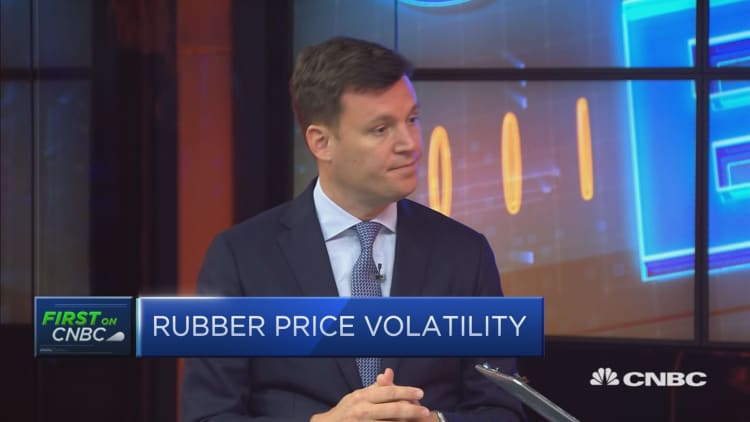
Prices of natural rubber, used in everything from condoms to automobile tires, are languishing near record lows and causing headaches for farmers.
The commodity is a staple in industrial supply chains but prices, which are determined primarily by the Shanghai Futures Exchange, have been volatile in recent years. After hitting rock bottom in early 2016 at roughly $1,000 a ton, levels are now around $1,400 a ton — which is still well below the 10-year average of $2,500 a ton, according to Halcyon Agri, a global supplier of the durable material.
The Singapore-based firm hopes to rectify the current gloomy environment.
"With what we're doing, I think we can restore a fair price over time by reducing the volatility," CEO Robert Meyer told CNBC on Monday.
Halcyon Agri has been on a heavy-duty acquisition spree as of late.
Last year, it entered into a three-way merger with Chinese chemicals firms Sinochem International and Singaporean rubber producer GMG Global to create the world's largest rubber supply chain manager.
In recent weeks, it's snapped up five rubber factories across Indonesia, adding to its portfolio of plants in Thailand and Malaysia. Those Southeast Asian countries produce nearly 70 percent of the world's natural rubber and officials in the three nations are expected to cut exports in response to dwindling prices.
"Managing volatility costs money, not just for us but for the whole supply chain, so I think we can take that cost out as volatility comes off and that restores income to farmers," Meyer said. Because erratic price movements determine how much farmers take home every day, many aren't getting a fair price for their product, he continued.
Shanghai futures are "more driven by what they call the black commodity complex, so rubber is bundled with iron ore, with rebar, with coal and that is subject to a lot of speculative interest," Meyer explained. "With that, the raw material prices move around."
Meyer said he's optimistic, however, noting that "this is an extremely interesting time for the rubber market."
"On a macro level, commodities have been in decline for a number of years, so the supply/demand is tightening," he said. "From a price point, this is a very good time to look at this market."


